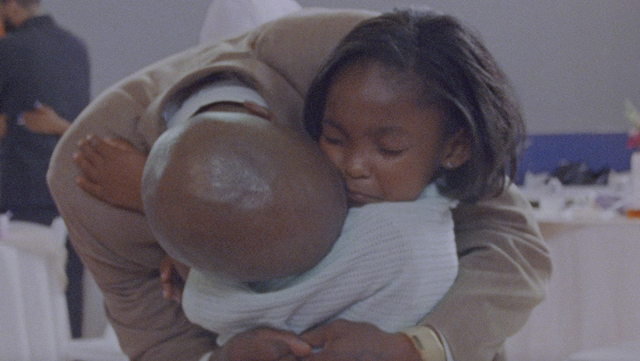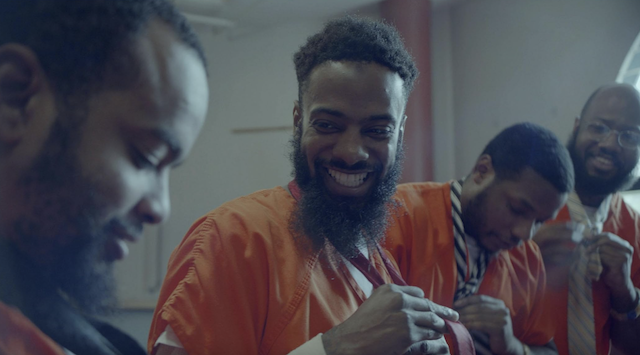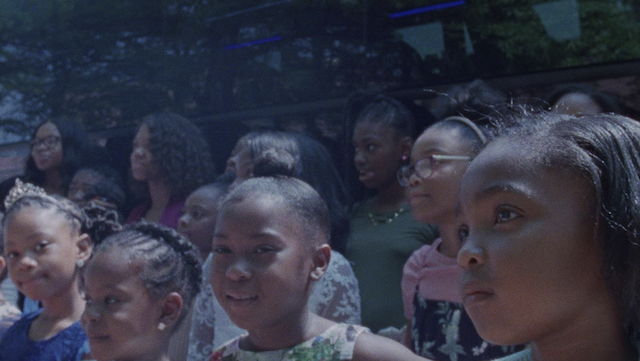
©Courtesy of Sundance Institute
Your relationship with your parents has a significant impact on who you became as an individual. Since most children can’t choose their parents when they’re born, it’s really impactful on a kid if their dad was incarcerated for a very long time. In “Daughters,” a heart-wrenching film that was recently shown at this year’s Sundance Film Festival, director Angela Patton essentially says, ”Our daddies are our mirrors; they reflect back on us when we decide what kind of man we deserve and how they will see us for the rest of our lives.”
Taking place at the Girls for Change Leadership Academy in Virginia, a young girl expresses her disappointment that her dad couldn’t attend the father-daughter dance because he is in jail. So she proposes the idea of holding the dance in the jail and that’s how it all began. That event in 2013 blossomed into the program and continues to this day.
In the film, four young women are seen preparing for a unique fatherhood program that involves a Daddy/Daughter Dance with their incarcerated fathers. Founded by Angela Patton, Girls for Change is an organization which launched its Date with Dad program 12 years ago in Washington D.C. and that led to its heartwarming mission to strengthen familial connection.

©Courtesy of Sundance Institute
The dads are required to complete a 10-week educational program on “fatherhood’ before they can attend this reunion. During these sessions — which combine group therapy and practical skills counseling — they reflect on their lives and share their apprehensions and hopes of making up a little for the time lost with their child.
The stars of “Daughters” are the girls: five-year-old Aubrey Smith, 10-year old Santana Stewart, 11-year-old Ja’Ana Crudup, and Raziah Lewis, 15. They are all grappling with their father’s absence at different points in their lives.
Aubrey is still young enough to imagine her father in faintly magical terms but Santana has already been hardened to the breaking point. It’s a real gut-punch to hear someone her age insist that she won’t even cry the next time her dad goes to jail; she swears off the idea of becoming a mother herself because being a kid has already proven too painful.
On the other hand, Santana’s father, Mark, talks about how young he and her mother Diamond were when she was born. He was 16 and she was 14. Their oldest child often comes across as wiser and more mature than her mother.
At 11, Je’Ana admits that she barely remembers her father at all, and her mother, Unita, is hesitant to let him back into her life in any capacity. While 15-year-old Raziah is the oldest of the documentary’s subjects, she’s perhaps the most fragile one, struggling in school and even expressing suicidal thoughts.

©Courtesy of Sundance Institute
The girls exhibit anger, fear, envy, and sadness as they desire their dad’s presence, but Patton also encourages the children, counsels the weary mothers and assures the men that they’re still needed.
“Daughters” illuminates the destructive inhumanity of the American prison system by highlighting policy changes that have reduced in-person visits and contact with friends and family to expensive and limited phone and video calls. This has led to these dance offerings becoming the only way for children to physically meet their fathers.
Incarcerated fathers are discovering knowledge and wisdom. When one father says, “The streets don’t love us. Our kids love us,” it leads us to believe and hope that they could all start anew.
The dance preparations on both sides of the prison walls bring us to the moment when the girls walk down the hallways to where their fathers wait, dressed up in suits made just for this occasion. This scene provokes a stream of emotions.
Throughout the film, the question remains: what’s the objective of rehabilitation for prisoners who’ve been separated from their families for an extended time period? Are they able to remain loved ones when they can’t even afford to make regular phone calls home? If they aren’t allowed to touch their children, can they be helpful in raising them?

©Courtesy of Sundance Institute
Co-directors Patton and Natalie Rae were determined to avoid sentiment when confronted with difficult outcomes. The film doesn’t exonerate the prisoners for their role in what led them to prison, but it also doesn’t reveal what they did to deserve their sentences.
With delicate sensitivity, the film exclusively focuses on the relationships between daughters and fathers. It reaffirms through these heartbreaking, honest stories that they are facing the future instead of the past.
Cinematographer Michael Cambio Fernandez shot the prison scenes in dark hues; by contrast, the girls are captured at their dance program in tones that sometimes seem dreamlike as they share hopes for their lives.
The film won the audience award for U.S. Documentary at Sundance and was also recognized for its inspirational mission to reunite daughters with their incarcerated dads. Patton’s intention was to create the Date with Dad prison rehabilitation program, which became a testament to her efforts to bridge the gap between daughters and fathers.
Check out more of Nobuhiro’s articles.
Grade : A

